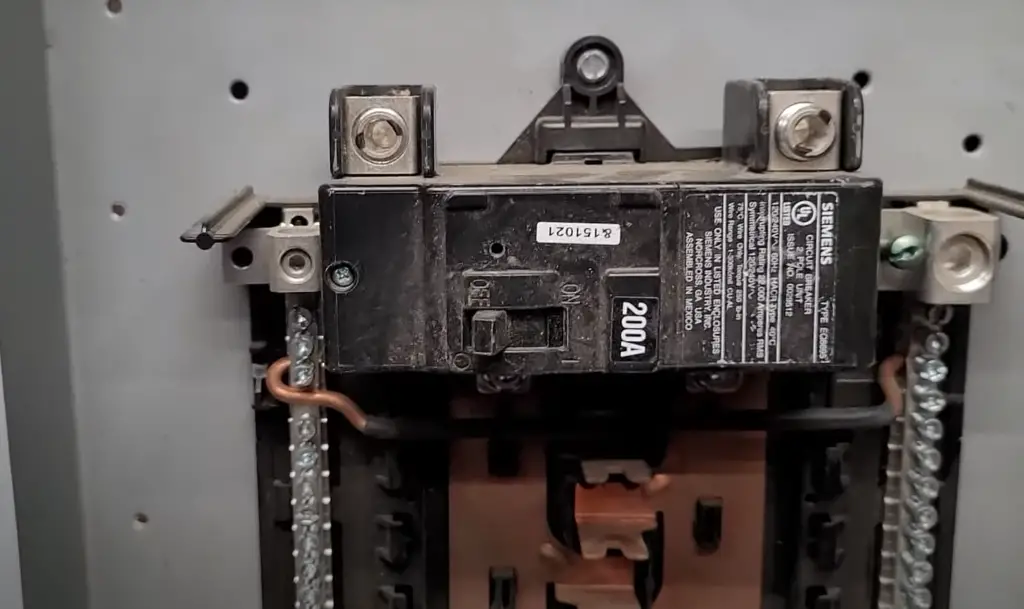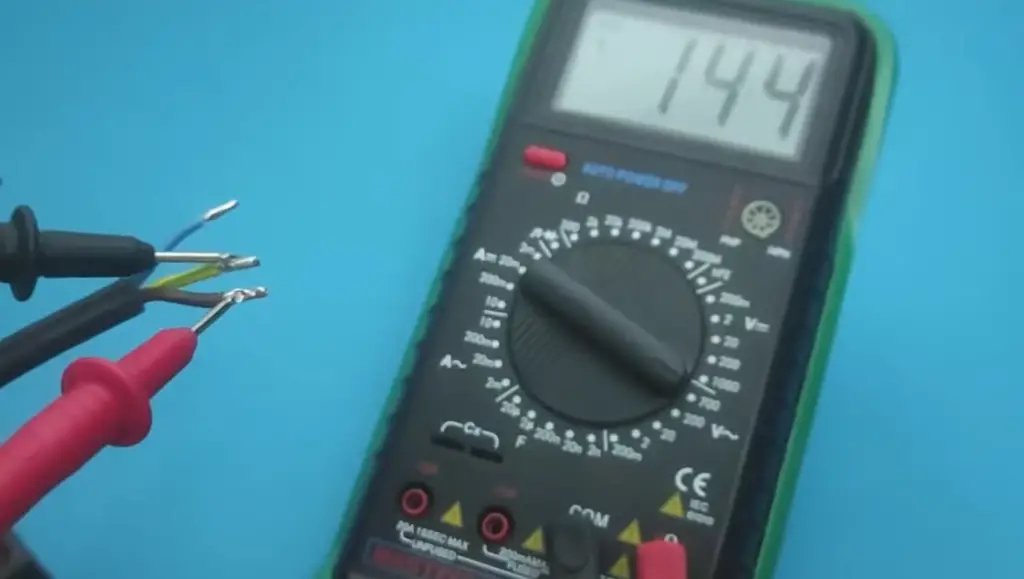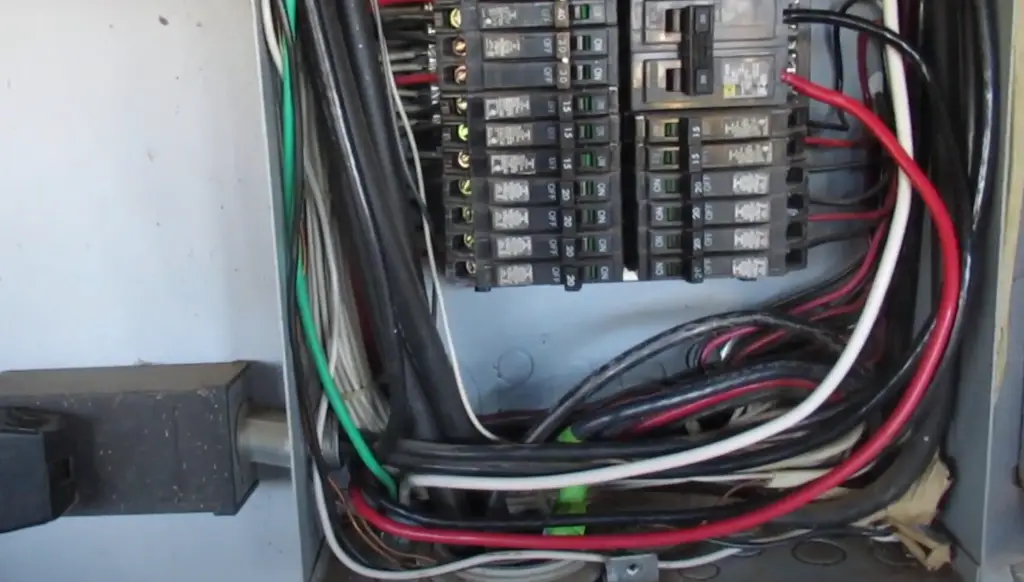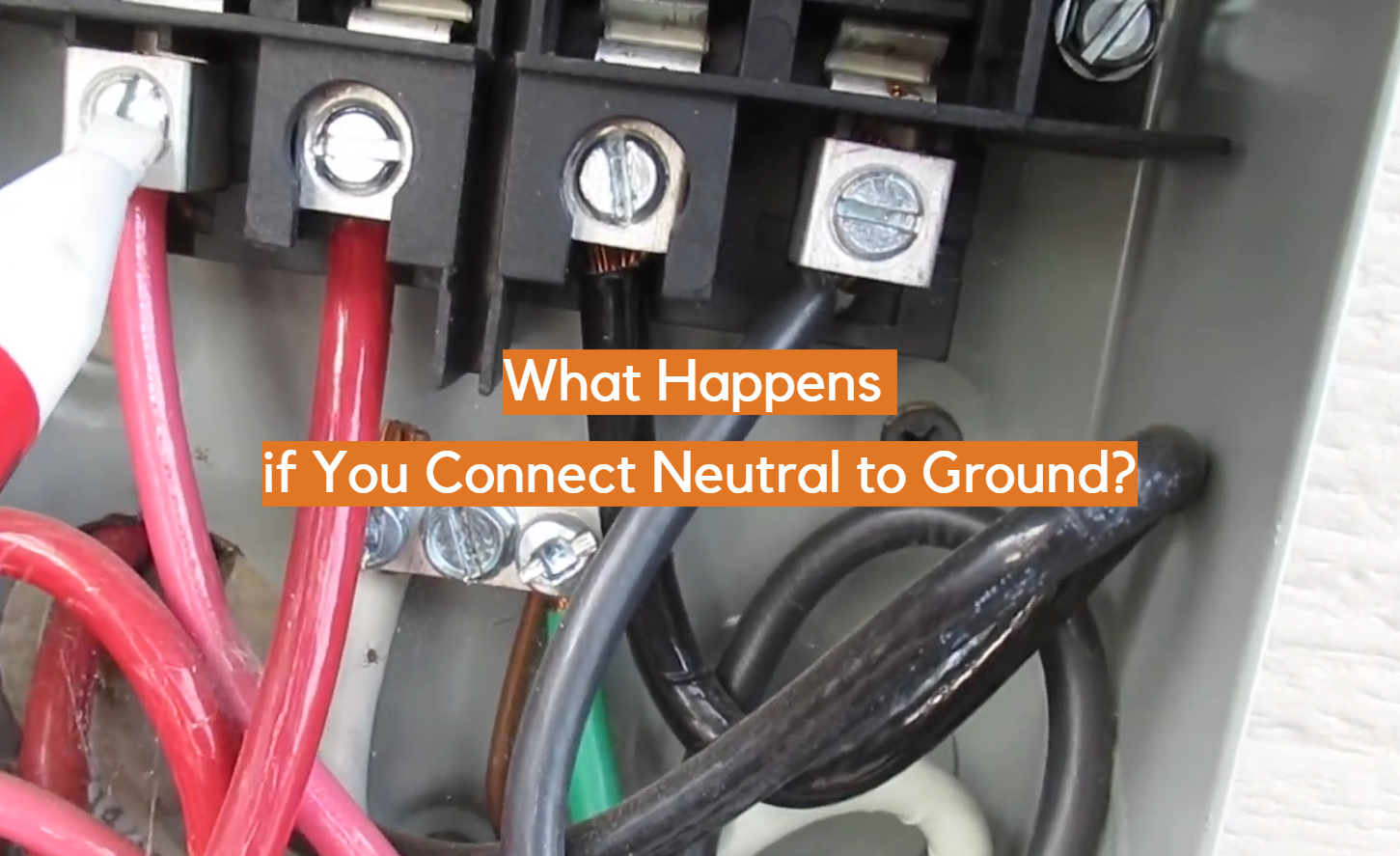Whether wiring a home or any other electrical project, it is essential to correctly and safely connect the neutral wire to the ground. But what happens if you accidentally cross the two wires? This raises an important question, one that many homeowners and electricians face during their projects. In this guide, we will provide a comprehensive overview of all you need to know about connecting neutral to ground—including potential consequences, tips on how to prevent them, and more useful information.
What is a Neutral Wire
This ensures that any electricity flowing through the circuit does not build up on ungrounded metal parts, which can potentially cause damage or injury. In some cases, a ground wire may also be included alongside the Neutral Wire for additional safety protection.
The Neutral Wire carries only a small amount of current compared to other wires in a circuit and so it does not need insulation as thick as that used on Live Wires (aka Hot Wires). While Neutral Wires are typically connected to a ground, they can also be connected to other Neutral Wires in order to complete the circuit.
It’s important to note that Neutral Wires should never be used as an alternate way of supplying power or grounding an electrical circuit. This is dangerous and could result in serious injury or death. All wiring must be done by a qualified electrician and all installations must comply with local building codes and safety standards. [1]

What is a Ground Wire
A ground wire is an important component in most electrical wiring. It serves as a safe path for stray electric current to follow in the event of a short circuit, overload, or other electrical fault. Ground wires are typically connected to all exposed metal components and inside any electrical box, such as those used in wall switches or outlets. The ground wire provides a return path for electricity that has gone astray, allowing it to safely bypass sensitive electronic components and prevent damage from occurring. Additionally, grounding wires help protect people against electrocution by providing a direct path through which electricity can flow away from them instead of into their bodies when touching an energized part of the system.
The connection between two parts of an electrical system may also be completed with a ground wire to prevent any interference from external sources, such as radio signals and electromagnetic fields. In short, the purpose of a ground wire is to protect both people and electrical components from harm in the event of an electrical fault. Without it, there would be an increased risk for fires, shocks, and other disasters. Therefore, it is essential that proper wiring with a grounding wire is installed when performing any type of electrical work.
Even though many countries have different standards for grounding wires or lack regulations altogether, most building codes require a continuous path between all parts of the electrical system so that electricity can flow freely if needed. This connection is usually achieved by running a bare copper conductor called a “grounding electrode conductor” (GEC) from the main service panel to a metal stake in the ground. From there, additional grounding wires are typically connected to any exposed metal components in the system, such as junction boxes and electrical outlets. [1]

Can Neutral And Ground Be Connected?
No, neutral and ground should never be connected. Ground wires are meant to provide a safe path for stray electrical current, while neutral wires are the live wires that actually deliver electricity from the source to the device or appliance. If both were connected together, it could create an unintended loop for the electricity and cause extreme damage by overloading circuits with too much power. It can also put you at risk of electric shock or fire due to short-circuiting. What happens when ground wire and neutral wire are connected is that it will cause the ground wire to become hot, which is dangerous for anyone to come in contact with. Therefore, it is essential that all wiring installations are done by a qualified electrician and that all local building codes and safety standards are followed.
To prevent any hazards, never connect neutral and ground together; they should remain separate at all times. In addition, connecting neutral and ground may also interfere with your utility’s grounding system which is designed to protect people from electrocution in case of an electrical fault. [2], [3]

Why Are Earth And Neutral Linked
However, because you asked this question, you may have heard some people refer to the neutral and ground wires as being “linked” or connected in some way. However you shouldn’t simply link the two together. That is not what is meant by “linking” the neutral and ground wires. Many people make mistakes when it comes to understanding how ground and neutral wires actually work together in an electrical system. In this section we will discuss why would someone “link” the two together and how they are actually linked in a properly wired electrical system.
Lack of knowledge
The most common reason why people think neutral and ground are connected is simply lack of knowledge on the topic. It’s easy to become confused when wiring an electrical system, especially if you’re new to it. The important thing to understand is that although a grounding wire may be connected to the neutral bus bar in the main service panel, this does not mean that the neutral and ground are connected together.
A grounding wire is used for safety reasons; it provides a direct path for stray current in order to protect against electric shock or fires caused by short-circuiting. It also helps reduce interference from external sources such as radio signals and electromagnetic fields. A proper connection between a grounding wire and the neutral bus bar should be made in order to ensure the system is properly grounded. This will also provide protection against electric shock, fire and interference from external sources.

Due to ignorance
It is also possible that a ground wire may be connected to the neutral bus bar due to ignorance. This can be dangerous as it can create an unintended loop for the electricity and cause overloading circuits with too much power, potentially leading to electric shock or fires. It is essential that all wiring installations are done by a qualified electrician and that all local building codes and safety standards are followed.
In some situations it actually can be safe
In some cases, connecting a ground wire to the neutral bus bar can actually be safe. For example, housing subpanels that are fed from a main panel must be grounded. The most common way to ground these subpanels is to connect the grounding wire directly to the neutral bus bar in the main panel. This connection is allowed because it will not create an unintended loop for electricity.
You can install them if your property lacks earth wiring, and they are considered safe by most electrical code standards. The important thing to remember is that when installing any kind of ground-neutral connection, it’s essential that you follow all local building codes and safety regulations.
It is also important to note that connecting a grounding conductor to the neutral bus bar should never be done in order to repair a defective equipment grounding system or correct an unsafe wiring condition. In these cases, the underlying problem needs to be identified and corrected before any further work can be done. [2], [3]

FAQ
Why does a neutral wire have zero voltage?
The voltage of a neutral wire is zero relative to ground because it is connected directly to the building’s main grounding point. This connection ensures that any current on the system is safely routed away from any metallic objects, preventing electric shock or damage. By connecting the neutral wire to ground, this creates a complete circuit through which electricity can flow.
What happens if neutral is connected to ground?
When neutral is connected to ground, it creates an alternate path for electricity that diverts it away from its intended destination. This can cause a variety of dangerous consequences such as electrical shock, fires, and potentially catastrophic equipment malfunctions.
The most immediate consequence of connecting neutral to ground is the presence of a voltage differential between the two conductors, which can cause a spark or arc that could be damaging to sensitive electronic components. Additionally, this current can travel through other metal objects in the vicinity and create a potential safety hazard for people and animals nearby.
In addition to these risks posed by the spark itself, improper connections between neutral and ground also lead to increased resistance in the system due to an additional pathway for electricity. This increases the amount of energy being dissipated as heat along with reducing electrical efficiency, which can reduce its useful lifetime if it is not corrected quickly enough.
Does neutral carry voltage?
No, neutral does not carry voltage. Neutral wires are typically used to return current to the source when electrical appliances draw power from the circuit. For a circuit to work correctly, every appliance must be connected to both hot and neutral wires in order for electricity to flow properly through the circuit. When neutral is connected to ground or earth (also known as earthing), it can often create an imbalance in the electrical system that can lead to various problems such as shock hazards and other damages.
What is the main role of a neutral wire?
In a standard 120/240 volt AC system, the neutral wire is connected to an earth ground at the service panel or load center. This provides protection against electrical shock by allowing current to flow away from people and equipment if there is an overload or short circuit condition on the circuit. The neutral wire also helps balance out any unbalanced loads on multi-phase circuits, thereby reducing voltage fluctuations in each phase. Additionally, it allows electricity to flow easily through a variety of different appliances, such as washing machines and refrigerators.
Without a neutral wire, electrical circuits would not function properly and could be dangerous. Therefore, it is important to ensure that the neutral wire is securely connected to all devices on a circuit in order to provide an uninterrupted return path for electricity. It is also essential that the neutral wire has proper insulation or protection from other conductors and objects within the circuit in order to prevent short circuiting and related safety issues.
Is it OK to connect neutral to the ground?
No, it is not recommended to connect the neutral wire to the ground wire. Doing so may cause electric shock or even fire hazards due to an imbalance in the electrical current and potential for a short circuit. Additionally, connecting the neutral wire to the ground wire can create a “backfeed” that sends electricity back into your home’s power system, which can be dangerous for both people and appliances. It is important to understand how your electrical system works when you are making any changes.
Why would a neutral be connected to a ground?
In some electrical systems, connecting the neutral wire to a ground can be necessary for safety purposes. Since electricity flows in a loop between positive and negative terminals, it is important that the potential difference between both sides is balanced. This means that any current leakage from either side of the system must be properly discharged or else it could cause serious hazards such as electric shock or short circuits. To ensure this balance is maintained, an electrical system may need to have its neutral wire connected to a ground terminal so that any excess voltage can be safely dissipated into the earth.
What happens if you don’t bond neutral to the ground?
Connecting the neutral wire to ground is a critical step in properly setting up an electrical system. If you do not bond neutral to ground, it can lead to some serious problems such as:
Electrical shock hazard. When the neutral and hot wires are not connected properly, it creates a path for electricity that bypasses the normal safety features of the circuit. This increases risk of electric shock or electrocution when coming into contact with exposed wiring.
Damage to appliances and electronics. Many modern appliances and electronics require a proper connection between neutral and ground in order to prevent damage from dangerous voltage levels, surges, or spikes in power supply lines. Without bonding these two connections together, it can lead to potential damage that may be expensive to repair or replace.
Computer and telecommunications systems failure. Computers and other sensitive electronics require a clean, consistent power source in order to operate properly. Without the neutral wire being grounded, there may be instances when these systems experience glitches or even fail due to spikes in power levels.
Bonding the neutral wire to ground is an important safety measure that should not be overlooked. If you do not bond neutral to ground, it can lead to many potentially dangerous problems such as electrical shock hazard, damage to appliances and electronics, and computer/telecommunications system failure. It’s always smart to consult with a licensed electrician before making any changes or connections with your home’s wiring for added peace of mind.
Why do neutral and ground need to be separated?
Ground and neutral wires are both an important part of electrical wiring. In most cases, these two wires are required to be connected in order to complete a circuit and provide electricity properly. However, it is essential that the ground wire always remains separate from the neutral wire.
The primary reason for this is safety. The purpose of grounding is to create a safe path for electric current to flow if there is ever an interruption in the normal flow of electricity. If the neutral and ground wires were connected, any disruption in the electrical current could cause a dangerous surge of electricity through either wire, presenting a danger to anyone who may be near the wiring system at that time.
In addition, connecting the neutral and ground wires can cause other issues, including inaccurate voltage readings and interference with protective devices such as circuit breakers.
Does neutral wire carry current?
The answer is no, the neutral wire does not carry current. The neutral wire carries electricity back to the service panel after it has been used by the appliance or device. In a typical residential circuit with alternating current (AC), there are two wires: an active (or “hot”) wire and a neutral wire.
The active wire carries power from the service panel to your appliances and devices while the neutral wire sends any unused power back to the service panel. The flow of electrons always happens from hot to neutral; therefore, no current flows through the neutral wire since it only acts as a return path for any extra electricity that hasn’t been used.
Useful Video: Why Neutrals & Grounds are Connected in a Main Panel
Conclusion
Ground and neutral wires are a critical component of any electrical system. However, it’s important to mention that those two wires should never be connected or else a ground wire can become hot, which can lead to serious damage. Connecting the neutral wire to ground could cause an overcurrent condition, arcing, and a potential fire hazard. Therefore, it’s important to hire licensed electricians for wiring projects that involve electricity and ensure all connections are done properly. It’s also important to invest in suitable electrical equipment that is approved for use by local authorities.
In this article we discussed the importance of grounding and neutral wires and what happens if you connect neutral to ground. The best way to protect your home from electrical malfunctions is by having regular inspections of your system conducted by qualified professionals. In conclusion, if you ever find yourself asking “what happens if I connect neutral to ground?”, remember that the answer is not good! Stay safe and always call an experienced electrician when dealing with electrical issues.
References
- https://ringelectric.ca/the-dangerous-effects-of-a-loose-neutral-wire/
- https://www.circuitsgallery.com/what-happens-if-you-connect-neutral-to-ground/
- https://homearise.com/connect-neutral-ground/














Leave a Reply